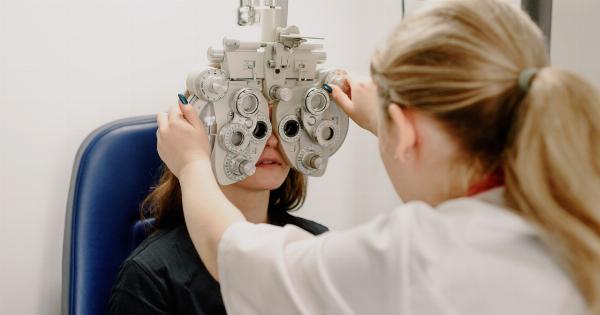Post-Traumatic Stress Disorder (PTSD) affects millions of people worldwide. It is a mental health condition that can occur after experiencing a traumatic event such as a natural disaster, military combat, or any other life-threatening situation.
Diagnosing and treating PTSD can be challenging, as symptoms may vary from person to person. However, recent advancements in machine learning have shown great promise in detecting and understanding this condition.
The Role of Machine Learning in PTSD Diagnosis
Machine learning, a subset of artificial intelligence, focuses on enabling computers to learn and make decisions without explicit programming.
By analyzing large quantities of data, machine learning algorithms identify patterns and make predictions or decisions with minimal human intervention.
When it comes to PTSD diagnosis, machine learning algorithms can analyze various types of data, including electronic health records, patient self-reports, and physiological signals, to detect patterns indicative of the disorder.
With this information, healthcare professionals can make accurate diagnoses and develop personalized treatment plans.
Types of Data Used in PTSD Detection
Machine learning algorithms can utilize different types of data to detect PTSD in patients. These include:.
1. Electronic Health Records (EHR)
By analyzing a patient’s medical history, including previous diagnoses, prescribed medications, and treatment outcomes, machine learning algorithms can identify common characteristics among individuals with PTSD.
2. Patient Self-Reports
Collecting information directly from patients through questionnaires or interviews allows machine learning algorithms to learn from patients’ experiences, symptoms, and triggers.
This data can provide valuable insights into the nature and severity of their PTSD.
3. Physiological Signals
Machine learning can analyze physiological data such as heart rate variability, skin conductance, and electroencephalography (EEG) patterns.
By detecting unique patterns associated with PTSD, algorithms can aid in both diagnosis and treatment monitoring.
Challenges in PTSD Detection
While machine learning offers promising avenues for PTSD detection, several challenges need to be addressed:.
1. Data Privacy Concerns
Accessing and analyzing sensitive medical data raises concerns regarding patient privacy and data protection. Implementing secure data sharing mechanisms and adhering to strict ethical guidelines are essential to overcome these concerns.
2. Data Quality and Quantity
In certain cases, data quantity and quality may pose challenges. Acquiring large volumes of high-quality data is crucial for the accurate training and validation of machine learning algorithms.
3. Interpreting Complex Data
Machine learning algorithms can analyze large and complex datasets, but accurately interpreting the results remains a challenge.
Ensuring healthcare professionals can understand and interpret algorithm findings is critical for effective diagnosis and treatment.
Successful Applications of Machine Learning in PTSD Detection
Despite the challenges, machine learning has already demonstrated its potential in PTSD detection:.
1. Early Diagnosis
Machine learning algorithms have shown the ability to identify early signs of PTSD, even before patients exhibit noticeable symptoms.
This early detection enables healthcare providers to intervene sooner, potentially preventing the deterioration of the condition.
2. Treatment Personalization
Machine learning algorithms can assist in tailoring treatment plans based on individual patient characteristics. By analyzing a patient’s unique data, algorithms can recommend the most effective therapeutic approaches, leading to better outcomes.
3. Predictive Analytics
Machine learning models can predict the likelihood of developing PTSD based on various risk factors. This enables proactive intervention and targeted support for individuals predisposed to the disorder, ultimately reducing its prevalence.
The Future of Machine Learning in PTSD Detection
As machine learning continues to evolve, its impact on PTSD detection is expected to grow significantly. Some potential future advancements include:.
1. Incorporating wearable devices
Wearable devices such as smartwatches and fitness trackers can provide continuous physiological data, allowing machine learning algorithms to monitor patients in real-time. This data can contribute to more accurate and timely PTSD detection.
2. Natural Language Processing
Natural language processing (NLP) techniques can be employed to analyze text data, such as therapy notes or social media posts.
By extracting relevant information from unstructured data sources, these techniques can provide supplementary insights for PTSD detection.
3. Collaborative Efforts
Collaboration between data scientists, healthcare professionals, and PTSD researchers is essential.
By combining their expertise, collaborative efforts can facilitate the development of more robust machine learning models for PTSD detection and treatment.
Conclusion
The application of advanced machine learning techniques in PTSD detection offers great promise for improving diagnostics and treatment.
By leveraging diverse datasets and analyzing patterns within them, machine learning algorithms can provide valuable insights into the complex nature of PTSD.
As technology continues to advance, machine learning will likely play a pivotal role in enhancing early detection, personalizing treatment plans, and reducing the overall burden of PTSD.
However, ethical considerations, data privacy, and interpretability challenges must be taken into account throughout the process.






























